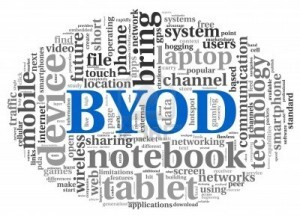

Evernote
Some tools that can definitely add to a CEO’s effectiveness with BYOD are apps and programs that can be downloaded from iTunes, the Google Play store, or simply online. One program in particular is the very popular Evernote. While much has already been written about it, Evernote is still an incredible useful program that can not only boost productivity for employees but help business leaders manage better. Evernote goes far beyond simply taking notes and saving them to the cloud. Think of it as a collaborative hub where multiple projects can be organized and important presentations saved. For a CEO, Evernote can become an invaluable tool that makes managing employees far easier by receiving instant updates and communicating with individuals over project progress. If every employee is active on Evernote, meeting established goals tends to go a lot more smoothly.
CRM Tools
Productivity is the name of the game, and any tools that help in that aspect will likely be embraced. For that reason, customer relationship management (CRM) tools–like Salesforce.com for example–have grown in popularity over recent years. With CRM tools, whole businesses can manage client relationships with relative ease. Many businesses use CRM programs to keep track of customers, their transactions, and their personal information. The best CRM tools can also help employees plan for how best to interact with customers, thus increasing customer loyalty and revenue. CEOs have plenty to gain from CRM tools as well. From the chosen program, business leaders can oversee all transactions and calculate how well employees are working with clients. CEOs should consider CRM not just as a great organizational tool for helping clients, they should also see it as way to evaluate employee performance. With BYOD becoming more common, a CEO will have more chances to get up to speed as he looks at the latest CRM information from his or her own personal devices.
MDM Platforms
Bring your own device may lead to many benefits, but the worry over BYOD security won’t go away anytime soon. Because of this, CEOs are advised to use mobile device management (MDM) platforms. While MDM might be seen as something purely under the jurisdiction of IT, CEOs should certainly have an added investment in overseeing how MDM is handled. Securing personal devices that may contain sensitive company data should be a priority, and MDM allows CEOs and IT to set specific controls over these devices. Through MDM, CEOs can define exactly what type of devices will be accepted under a BYOD policy while also approving which apps can be installed. MDM also enables a CEO to help isolate company data on a smartphone or tablet, essentially isolating it from an employee’s personal data. CEOs can also control authorization and privileges, choosing which devices can be granted access to the most sensitive information. In essence, MDM allows CEOs to prepare and anticipate security problems rather than just reacting to them. This can prevent future headaches and damages due to security breaches or irresponsible employee behavior .
If one thing can be learned, it’s that BYOD isn’t just for employees. There are plenty of advantages for CEOs if they choose to go with BYOD. The tools mentioned above can be particularly helpful for CEOs looking to improve personal productivity, customer and employee management, and mobile security. Added responsibilities may keep some business leaders away from BYOD, but the benefits can definitely outweigh the drawbacks.